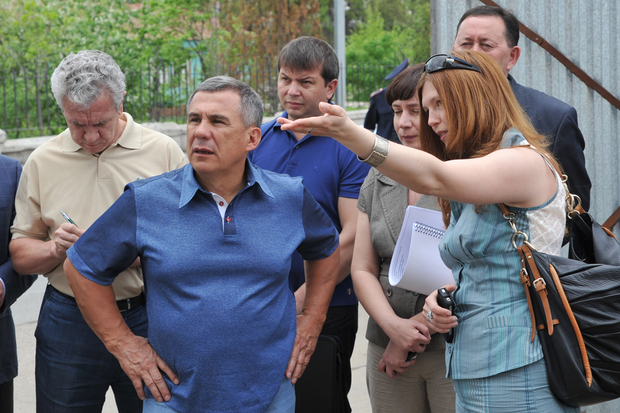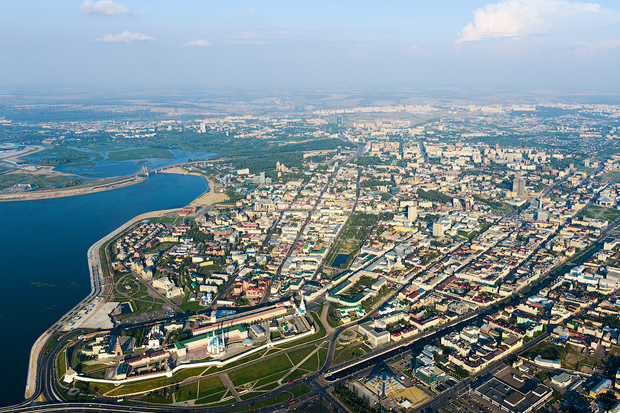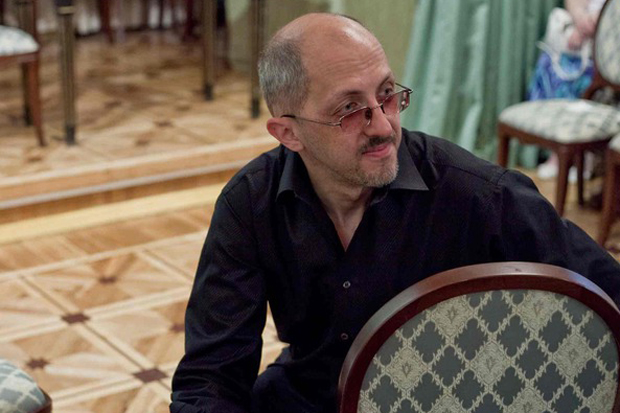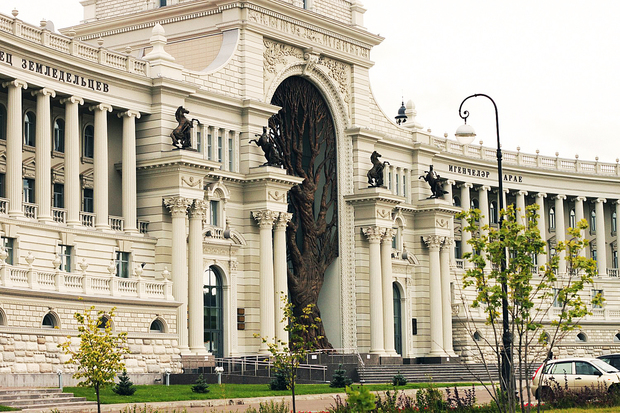Rustam Rakhmatullin, Arkhnadzor: ‘The city that loves and respects itself — starts earning’
About the unique phenomenon of Olesya Baltusova and a mixture of authentic restored buildings and replicas
One of the founders of the public movement Arkhnadzor and one of the most famous city's protectors in the country Rustam Rakhmatullin, having visited Kazan, was surprised by the condition of the historic part of the city. In an interview with the correspondent of Realnoe Vremya he said that Tatarstan capital is not just a provincial city but a Tsar city.
'I want to hope that such vandalism would never repeat again'
Good afternoon, Rustam, how do you assess the losses that Kazan has suffered in the last few decades?
I was in Kazan last time quite long ago, in the late 1990s. The contrast is significant, mainly due to the change of scale of the space and buildings near the Kremlin. Before the Kremlin, as well as behind it, up Kazanka river. It is clear that there were significant amounts of demolitions, about which the city's protectors know. However, for those who, like me, almost swore never to return to the city after these demolitions, I can say that rumors of the death of 'old Kazan' have been exaggerated. Because it's a really big historical provincial city, and the number of its historical buildings is very huge. Recognizable and favorite places have been found. I want to hope that such vandalism would never repeat again, the attitude to the old town would not develop this way.
Why do you think the situation has changed, why have the officials ceased to destroy the old town?
The leadership has changed, the new leadership invited the city's protectors headed by Olesya Baltusova to be advisers. They became the power and unfold the situation from seemingly hopeless. The example of such collaboration, cooperation is unique for the country. However, we assess remotely, and that cooperation does not mean that the problems have ended, that city protectors can solve any (problem — editor's note) in favor of the preservation of the old city at the snap of a finger. However, there is a positive turn. In contrast with this turn, the 2000s can be described as frankly vandaly.

'The new leadership invited the city's protectors headed by Olesya Baltusova to be advisers. They became the power and unfold the situation from seemingly hopeless situation. The example of such collaboration, cooperation is unique for the country.' Photo: prav.tatar.ru
Why is it important to preserve historic buildings? Indeed, the officials who do not understand its value, by and large, remain in their job positions.
Our heritage is not in a rhetorical era but in the era of law. If officials don't understand something, they must deal with the law, the city's protectors should not waste time to persuade them. Only then it is worth to waste time to persuade them when an aspect of our issue is not regulated by law. But if an official commits a criminal offense under the article 243 — a deliberate destruction of monuments of history and culture — he must be in prison. If an official commits an administrative offense, he must bear administrative liability. If he does not comply with the requirements of the legislation to urban planning regulation, the regulation on the territories of the monuments and in the zones of protection; if he makes decisions that go beyond legal solutions and regulations outlined in our legislation — the Prosecutor must come to him.
'To distinguish between an authentic restoration and a replica — an unpleasant activity'
The turning point in the relation to the historic buildings was around the beginning of 2011. In these five years, we have done a pretty impressive work, how do you evaluate it? After all, many of the buildings have been lost. Only the facade remained from the hotel Kazan, and even not all, some of the buildings have been completely destroyed and built from scratch.
To distinguish between an authentic restoration and a replica — an unpleasant activity. When you understand that there is a concrete basis by the nature of the cracks in the plaster, it means, there is no historic building. Here, it is necessary to assess the fact of the destruction of a building, separately — the quality of a new construction, separately — whether the scale of a street, a quarter has been preserved, or destroyed. The impression, in general, is following: the city has become a mix of authentic restored buildings and replicas, alas. It is the consequences of the 1990s and 2000s.
Most travelers come for the antiquities
Now Kazan is putting emphasis on the development of tourism. How do you think the city does have something to show, whether there is enough preserved heritage to attract tourists, can the city interest enough people?
Of course, it can. In the case of the correct establishment of the excursion business, of the proper branding of the city. Like any large city of Russia, which is historical, Kazan is indestructible. Of course, a lowering of the architectural quality environment and the destruction of buildings have a negative impact on business. But what we have managed to preserve, on contrary, help. That what is mentioned or researched in the literature — architectural, historical, regional. A person who comes to the city with an old book will find everything in the same places.

'Like any large city of Russia, which is historical, Kazan is indestructible.' Photo: Slava Stepanovich (gelio.livejourna.com)
Perhaps, someone is going to marvel at the Qolşärif Mosque, or the Agricultural Palace, but I assure you, most travelers come for the antiquities. Pilgrims go only for the antiquities. And it is the resource and capital that every historic city has to protect.
The city that loves and respects itself, — starts to earn
What can be done to change the attitude? Why the preservation of old buildings, historic buildings is not in the interests of the business, for whom it is cheaper to demolish and rebuild, why can't we set a system like in Europe, when the heritage manages to be capitalized?
There is no such thing 'like in Europe'. In Europe there is the pole of London, which destroys itself, and the pole of Rome, which is a model of conservation. We should do not like in Europe but like in Russia.

'The city that loves and respects itself, — it preserves itself, is brandished correctly and starts to earn. Some small Russian towns know it from themselves. In some small towns it is the main method of the budget replenishment.' Photo: A. Stepanenko (photo.qip.ru)
The question is too big, but if we talk about the economy of heritage — it is not developed, the mayor's office of Moscow is not interested in the economy of heritage and does not understand what it is.
Does the economy of heritage exist?
Yes, the city that loves and respects itself, — it preserves itself, is brandished correctly and starts to earn. Some small Russian towns know it from their own experience. In some small towns, it is the main method of the budget replenishment. In Western Europe, large cities have also learned how to do it. In Russia, the big cities just have to learn. Except Saint Petersburg, which does know. To make all such big cities 'a Petersburg', i.e. a city that understands that historical heritage is the capital — that is the problem, from Moscow to Kazan and beyond.

Kazan is more than a provincial city, it is a Tsar city
If to consider it from the other side, isn't Kazan a usual provincial city that are tens in Russia, does it have its own face, its own soul?
Each city definitely has its own face and soul, is the task is to identify them, and this is a task for the citizens themselves.
Kazan is more than a provincial city, it is a Tsar city. Even in ancient terms, when Khan was called the Tsar, and the title of Tsar of Kazan was included in the title of the Russian Tsar. And this Tsar scale still emerges through provincial. The combination of the Tsar and the province is already unique. Maybe it is the same way in Astrakhan, but weaker.
Another factor is the interfaith, when the mosque of the XVIII century, as we have already said, could be built by Russian masters of Church or a professional architect — a student of Knyaz Dmitry Ukhtomskoy (the builder of the bell tower of the Trinity Lavra of St. Sergius – editor's note). The combination of these three factors is already unique, and they are much more.
Reference
Rustam Rakhmatullin is a Russian writer, essayist, a specialist in Moscow and cultural studies; one of the founders of the public movement Arkhnadzor and the magazine Moskovskoe Nasledie (Moscow heritage).